
Fang Lijun, 2009
Fang Lijun
方 力钧
Painter, *1963 Handan, Hebei, studios in Beijing

Fang
Lijun, 2009
Growing up during the Cultural
Revolution, Fang was ostracized by many of his peers because of his
landholding family’s wealth and social status. Encouraged by his
father and instructors, Fang dealt with his isolation by applying his
drawing skills to the officially-sanctioned "criticism" of
figures such as the philosopher Confucius and Mao's
ally-turned-adversary, Lin Biao.
While attending the local
Children’s Cultural Palace Fang received his first instruction in
the use of oil paints, ink, and watercolors.
In 1980, Fang
abandoned his high school education to begin a three-year course
studying ceramics at the Hebei Light Industry Technical College. At
the time, ceramics was the only department accepting new students. On
completion of his course work, Fang accepted a prominent position
producing billboards for a Handan advertising agency (1983)
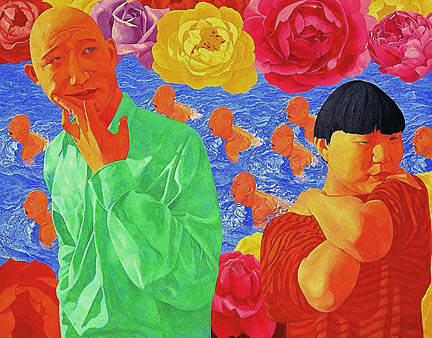
Painting
No.1, 1983, acrylic, 180 x 220 cm
After working at the advertising
agency for a year, Fang grew bored with the art of promoting locally
produced goods. He decided to give up the intellectually stultifying
job and instead prepared for the entrance exams at the prestigious
Central Academy of Fine Arts in Beijing, where he began his studies
in 1985.
Although enrolled in the printmaking department at CAFA,
Fang chose to exhibit a series of a oil paintings for his graduation
project in 1988. Showing paintings, rather than prints, was a public
statement of Fang’s dissatisfaction with the quality of the
instruction he received in the printmaking department. In these oils
Fang introduced the bald-headed figures who would become the familiar
protagonists in many of his canvases.
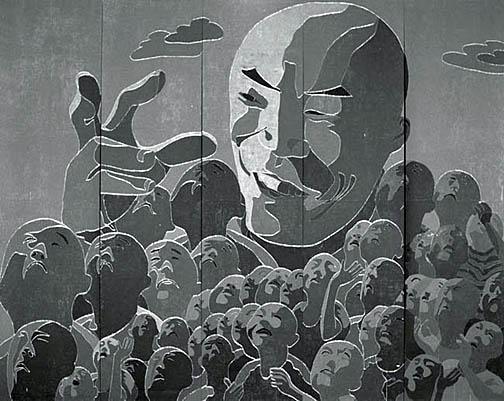
Unitled,
1995, composite of five wood-block print scrolls 490.9 x 606.2 cm
In 1995, Fang returned to wood block
printing. His monumental sized prints, - such as No.17, Triptych
(1996) - revive the ancient Asian practice of woodblock printing -- a
complicated and exacting process of carving a ‘negative’ image
into a panel, coating the surface in ink, and impressing the image
onto paper; each different colour and tone requires a separate plate
and order of printing. Due to their immense scale, Fang’s images
are composed on several adjoined scrolls; the elongated strips create
both an emotive fragmenting of the image, and create a reference to
memory and historical testimony. Thematically, each of these prints
describe the plight of the individual against the ‘mass’,
creating a spiritual contemplation of solitude the quest for personal
probity in the face of adversity.
Saatchi
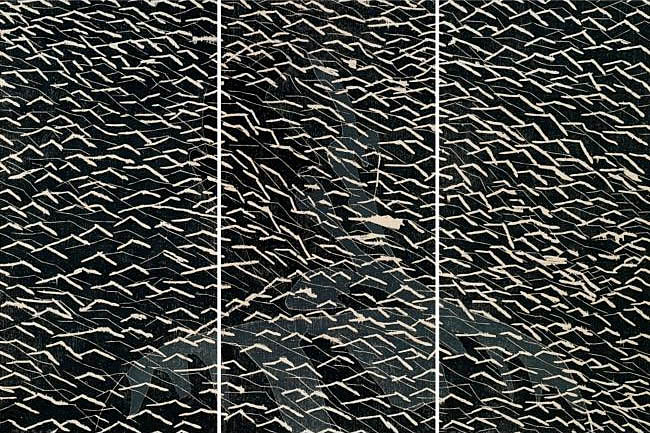
No.17,
Triptych, 1996, 261.6 x 365.7 cm
One of the leading proponents of the
early 1990s 'Cynical Realist' movement, Fang Lijun’s work
encapsulates the disillusionment of China’s youth; a generation
defined by the events at Tiananmen Square and China’s internal
domestic policies.
Constructed around loose narratives Fang’s
images personalise sentiments of disenchantment, angst, and
rebellion; his fictional suggestions conveyed through his
illustrative style and re-occurring bald-headed protagonist.

Series
2.2, 1991-1992, 200 x 230 cm
Fang’s practice exhibits a
rarefied technical skill rigorously studied through his Social
Realist training; his combination of this aesthetic with references
to contemporary comics, folk art, and dynastic painting characterise
a national identity in flux, distilling a position of integrity from
tradition and the modern world.
Saatchi
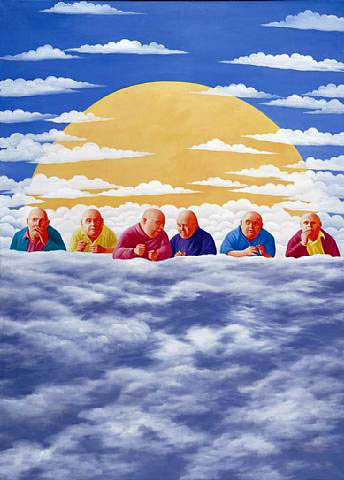
untitled,
2003
“Hog Heaven”

'30th
Mary', 2006,
oil on 3 canvas scrolls, 400x525 cm
Fang’s painting '30th Mary' evokes these same sentiments with a humorous effect. Reminiscent of European church ceiling paintings, Fang portrays an order of ascendancy of same-same kewpie figures, each based on his own image. Executed with painstaking hyper-realism, the clouds formulate as a tempestuous funnel rather than a portal of billowing promise. Contrasted with the kitsch palette and pop rendering of the grotesque cherubs, Fang’s painting approaches the sanctity of ideological assurance with an empathetic cynicism.
The Deluge will wipe all out but the 'grotesque cherubs'
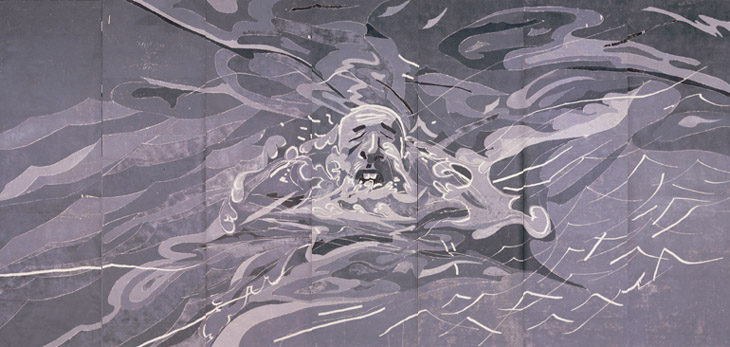
untitled
2003
, wood block prints on 7 fabric scrolls with wooden dowels,
400 x 852 cm
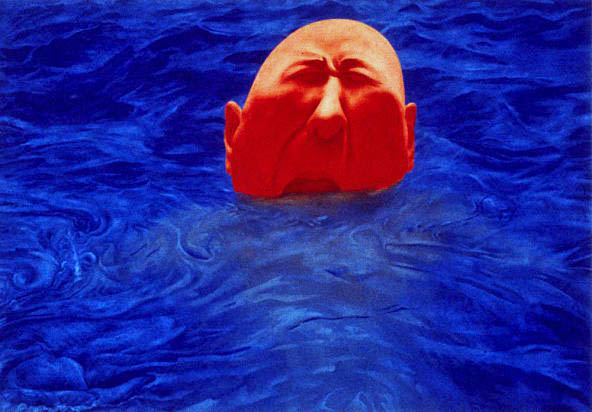
untitled,
2007, serigraph, 112 x 78 cm
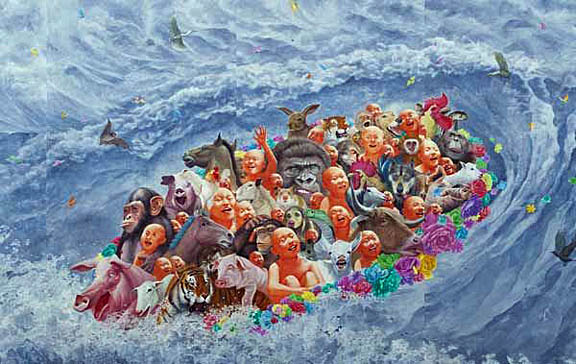
untitled,
2010, oil on canvas

Spring,
2011, oil on canvas,180 x 240 cm
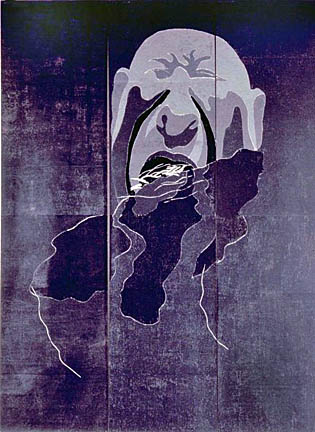
untitled,
2010, wood block print
方 力钧